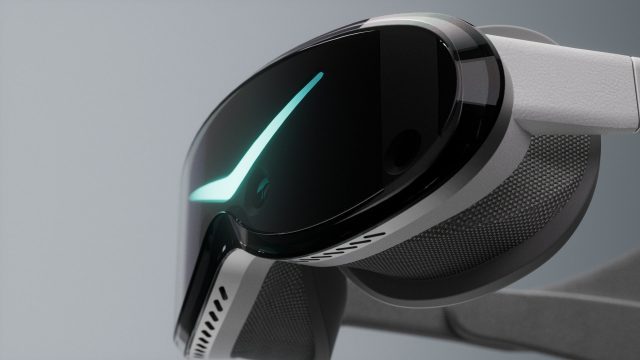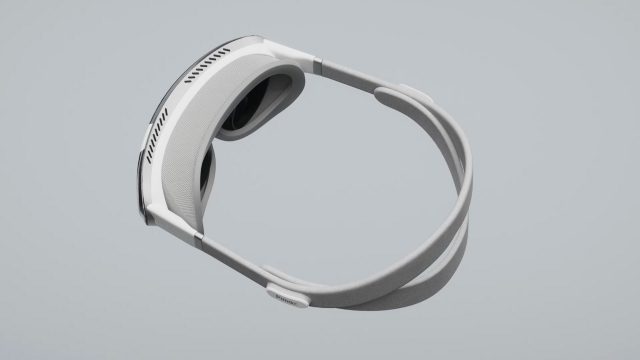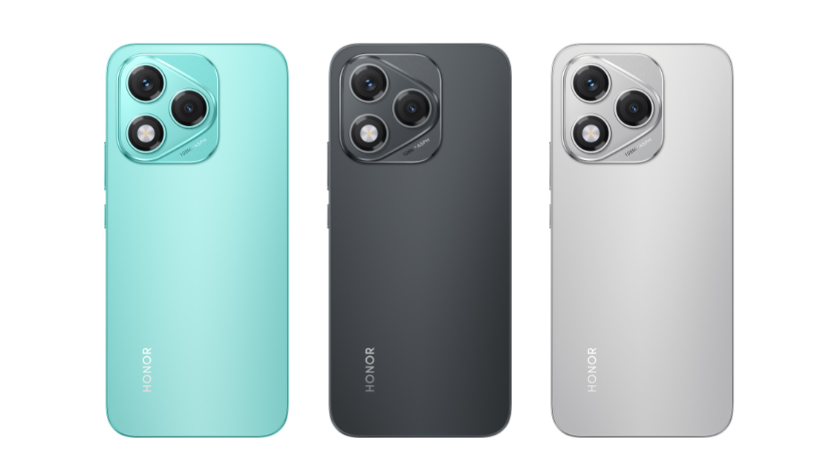The Pimax Dream Air headset represents a new area of focus for the company. While most of its headsets up to this point have been necessarily bulky to achieve their signature large field-of-view, the Dream Air aims to make a headset that’s compact but still feature-rich. One of those features—a headstrap that automatically tightens—would be an industry first.
Priced at $1,900 and purportedly shipping in May 2025, Pimax’s Dream Air headset aims to take on an emerging segment of compact high-end PC VR headsets like Bigscreen Beyond and the Shiftall MaganeX Superlight.
But it wouldn’t be Pimax if it didn’t make additional ambitious promises which risk pulling the company’s attention away from delivering its products on time and as promised. For the Dream Air, that additional promise is an optional compute puck which the headset can plug into to become a standalone VR headset. The company is calling the puck ‘Cobb’, and says it will include a Snapdragon XR2 chip and battery. Oh, and don’t forget the optional SteamVR Tracking faceplate.
Speaking of pulling the company’s attention… the announcement of the Dream Air continues Pimax’s trend of revealing new products before delivering on those it has previously announced. The company’s Crystal Super headset was announced back in April 2024 and originally planned for a Q4 2024 release, but is now said to be releasing sometime in Q1 2025.
As for the Dream Air, it will purportedly be compact and also full of a wishlist of specs and features:
- Weight of 200g
- Resolution: 13MP (3,840 × 3,552) micro-OLED per-eye @ 90Hz and “HDR”
- 102° field-of-view
- Inside-out tracking
- Motion controllers & hand-tracking
- On-board audio
- Optional prescription lenses
- Eye-tracking
- Automatic IPD and automatic strap tightening
That last one—automatic strap tightening—is a feature that hasn’t been included in any major headset to date. It’s an interesting idea considering the challenge of fitting a headset comfortably; many users want to crank their headset tight to their face so it won’t move, but the most comfortable way to use a headset is to balance tightness with stability.
The design of the auto-tightening strap also looks carefully considered. While we’ve only seen renders so far, it appears the tightening mechanism is hidden under fabric, making the tightening of the headstrap looks like it’s simply shrinking in place.
If the headset could effectively dial in the ideal tightness, it would be a boon for many users. Dream Air also has automatic IPD adjustment, which sets the distance between the lenses to match the user’s eye width (something most people also aren’t good at doing manually).
While it remains to be seen if Pimax can deliver something as svelte as promised, for now it looks like the company is flexing an industrial design muscle that’s been largely hidden by the utilitarian and boxy style of its previous headsets.

However, Pimax isn’t giving up those boxy designs of yore. The company says that a compact headset is a new area of focus for the company, but it will continue developing its larger and wider field-of-view headsets.
Pimax is already taking pre-orders for the Dream Air, with a price of $1,900 and an expected release date of May 2025.



![[Industry Direct] Opening a New Chapter in VR Gaming – ‘The ChicKing Dead’ Enters Early Access! [Industry Direct] Opening a New Chapter in VR Gaming – ‘The ChicKing Dead’ Enters Early Access!](https://roadtovrlive-5ea0.kxcdn.com/wp-content/uploads/2025/04/2_CKD_Screenshots_1-640x360.jpg)



